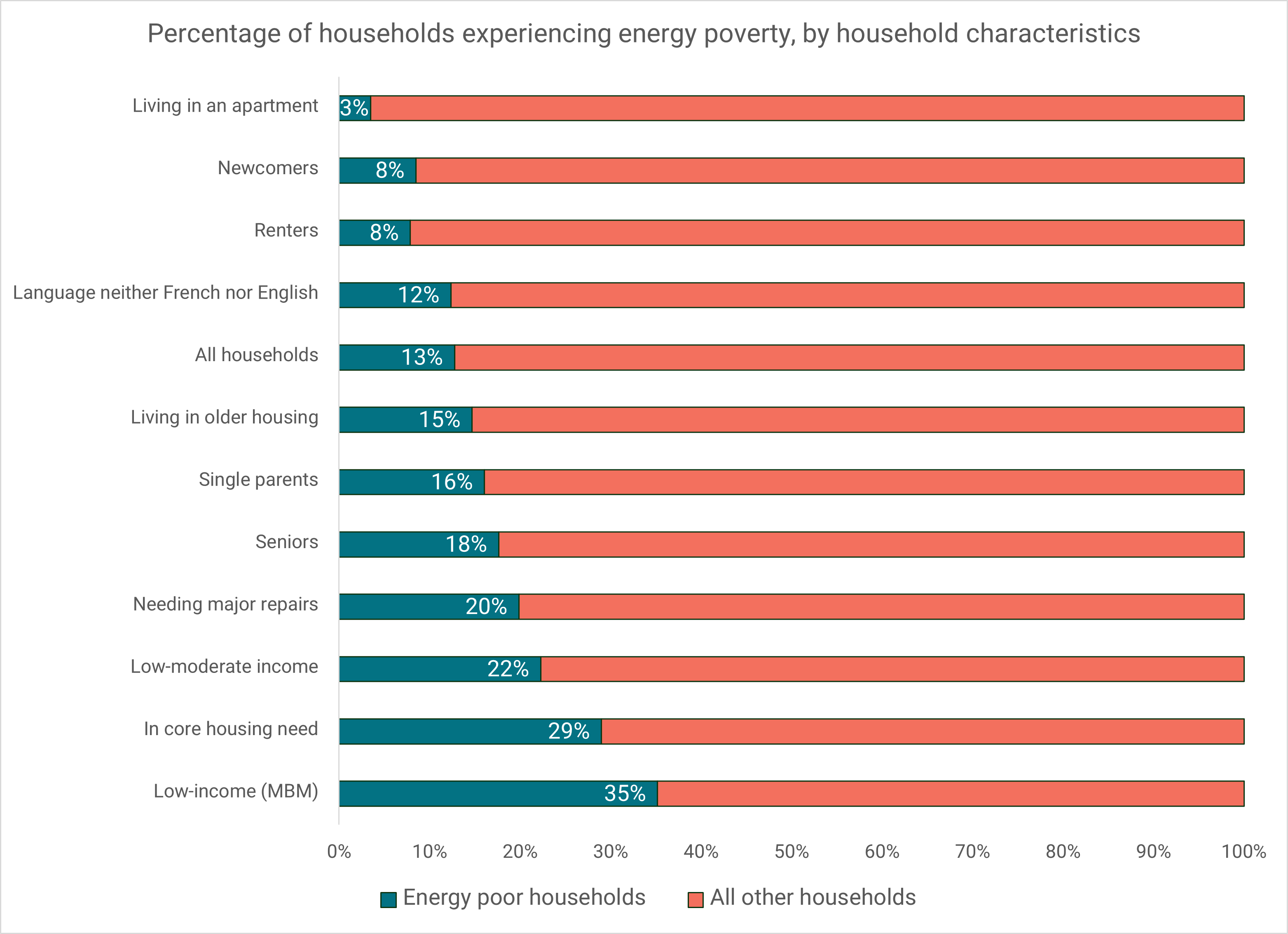About the report
Achieving net-zero emissions by 2050 is central to Canada’s climate strategy, yet over two million households experience energy poverty, struggling with high energy costs and poor housing. Retrofitting buildings for energy efficiency and low-carbon energy can reduce emissions while alleviating energy poverty, but without targeted support, vulnerable households risk exclusion, worsening inequalities, and weakening climate policy support.
This report explores how integrating energy poverty reduction with net-zero retrofits can lower costs, improve housing, and enhance climate resilience. However, systemic barriers—high upfront costs, fragmented policies, workforce shortages, and limited data—disproportionately affect low-income renters, rural communities, and Indigenous populations. Addressing these challenges requires coordinated policies that prioritize affordability and housing stability.
Key recommendations include delivering no-cost retrofits for energy-poor households, expanding flexible financing for middle-income families, protecting renters from displacement, investing in workforce training, and creating a national energy poverty advisory hub. By implementing these strategies, Canada can ensure an inclusive transition to net-zero that reduces emissions while improving the lives of those most affected.
Authors

Abhilash Kantamneni
Director of Action Research

James Gaede
Director of Research

Brendan Haley
Sr. Director of Policy Strategy
Key report findings
Ensure equitable access through no-cost retrofits and flexible financing.
Fully funded retrofits for energy-poor households eliminate financial barriers and ensure broad participation in energy efficiency programs. Expanding innovative financing options, such as on-bill financing and Property Assessed Clean Energy (PACE) programs, can help households make sustainable upgrades without financial strain.
Integrate energy poverty reduction with climate and housing policies.
Establishing a national definition and consistent metrics for energy poverty will improve program effectiveness. Aligning energy efficiency initiatives with housing, energy, and health policies ensures a coordinated approach, while strong tenant protections safeguard renters from displacement and rent increases after retrofits.
Invest in workforce development and community resilience.
Expanding training programs strengthens local job opportunities and increases retrofitting capacity, particularly in rural and Indigenous communities. Additionally, integrating non-energy benefits, such as funding pre-retrofit repairs and linking energy efficiency efforts with health and housing initiatives, improves overall well-being and housing stability.
Additional resources



